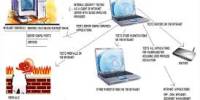Organic solar cells (also known as organic photovoltaic cells or OPV) are a type of solar cell that use organic materials to convert sunlight into electricity. Unlike traditional silicon-based solar cells, organic solar cells are made from organic semiconductors, which are lightweight, flexible, and can be printed onto a variety of surfaces.
Organic solar cells are an emerging technology with a lot of promise. They have the ability to be lighter, more flexible, and come in a range of colors, which makes them more appealing for urban or façade applications than the standard silicon solar panel.
However, as scientists try to comprehend the basic mechanisms that underlie how organic solar cells function, progress in device performance has been slow.
Now, engineers at Princeton University and King Abdullah University of Science and Technology have described a new way to express energy loss in organic solar cells and have extended that description to make recommendations for engineering the best devices. This innovation might change the way organic solar cells are typically built. Their work was published on November 18 in Joule.
“There was a way that energy loss in organic solar cells was traditionally described and defined. And it turns out that that description was not wholly correct,” said Barry Rand, co-author of the study and associate professor of electrical and computer engineering and the Andlinger Center for Energy and the Environment.
Rand pointed out that the traditional method for describing energy loss did not account for the presence of disorder in an organic solar cell. Dynamic disorder is one sort of disorder that results from the erratically moving molecules at the microscopic level, which almost guarantees energy loss at most temperatures.
The third form, structural or static disorder, results from both the internal arrangements of the numerous components that make up an organic solar cell and the intrinsic structures of those components.
No of the materials used, previous research on organic solar cells produced values of roughly 0.6 electron volts without taking into account disorder in energy loss calculations. However, when Rand and his team took disorder into account while calculating energy loss and testing various systems, they discovered that the degree of disorder had a significant impact on how much energy an organic solar cell lost overall.
There was a way that energy loss in organic solar cells was traditionally described and defined. And it turns out that that description was not wholly correct.
Barry Rand
“As the disorder of a solar cell increases, we see our non-radiative energy loss component the component that we have control over grows rapidly,” Rand said. “The non-radiative energy loss grows with the square of the disorder component.”
The researchers were able to suggest materials that minimize disorder and thus result in more efficient devices after proving that increasing disorder causes energy loss to significantly increase in devices.
In an organic solar cell, scientists have some control over the degree of structural disorder since they can select the materials they employ and how to organize them.
When designing an organic solar cell, scientists can concentrate on producing a homogeneous mixture of materials, in which a film’s constituent parts are all either crystalline or amorphous, or a heterogeneous mixture, in which a film’s constituent parts are both crystalline and amorphous.
Through their research, Rand’s team proved that homogenous mixtures are the best choice for creating organic solar cells. For better-performing organic solar cells, Rand said that scientists should use either highly crystalline or highly amorphous materials and avoid mixing the two within a device.
“If you have anything in between, some heterogeneity in which parts of a film are slightly crystalline and some parts are amorphous, that’s when you lose the most energy,” Rand said.
This result deviates from conventional wisdom, which held that some degree of heterogeneity in solar cell combinations was advantageous for overall performance. However, Rand’s team discovered that heterogeneous device mixes lost a considerable amount of energy and had high degrees of disorder; he said that their discovery could provide new focus for researchers as they pursue more efficient organic solar cells.
“Heterogeneity has often been the focal point of devices. Some level of crystallinity was thought to be beneficial. But it turns out that that’s not what we saw,” said Rand. He made the observation that many of the best organic solar cells on the market today are made of extremely amorphous films and stated that, given the limitations of current technology, entirely amorphous mixes are more practical than those that are completely crystalline.
Although the main goal of his team’s research was to comprehend the underlying physics of organic solar cells, Rand is optimistic that others will be able to apply their findings to create more effective gadgets and eventually set new performance standards for this promising solar technology.
“This discovery is another aspect of organic solar cells that we can add to what we already know, which will help us improve their efficiency going forward,” Rand said.
However, organic solar cells currently have lower efficiency and shorter lifespan compared to traditional solar cells. Efforts are being made to improve the efficiency and durability of organic solar cells, and they are seen as a promising technology for future solar energy applications.
















